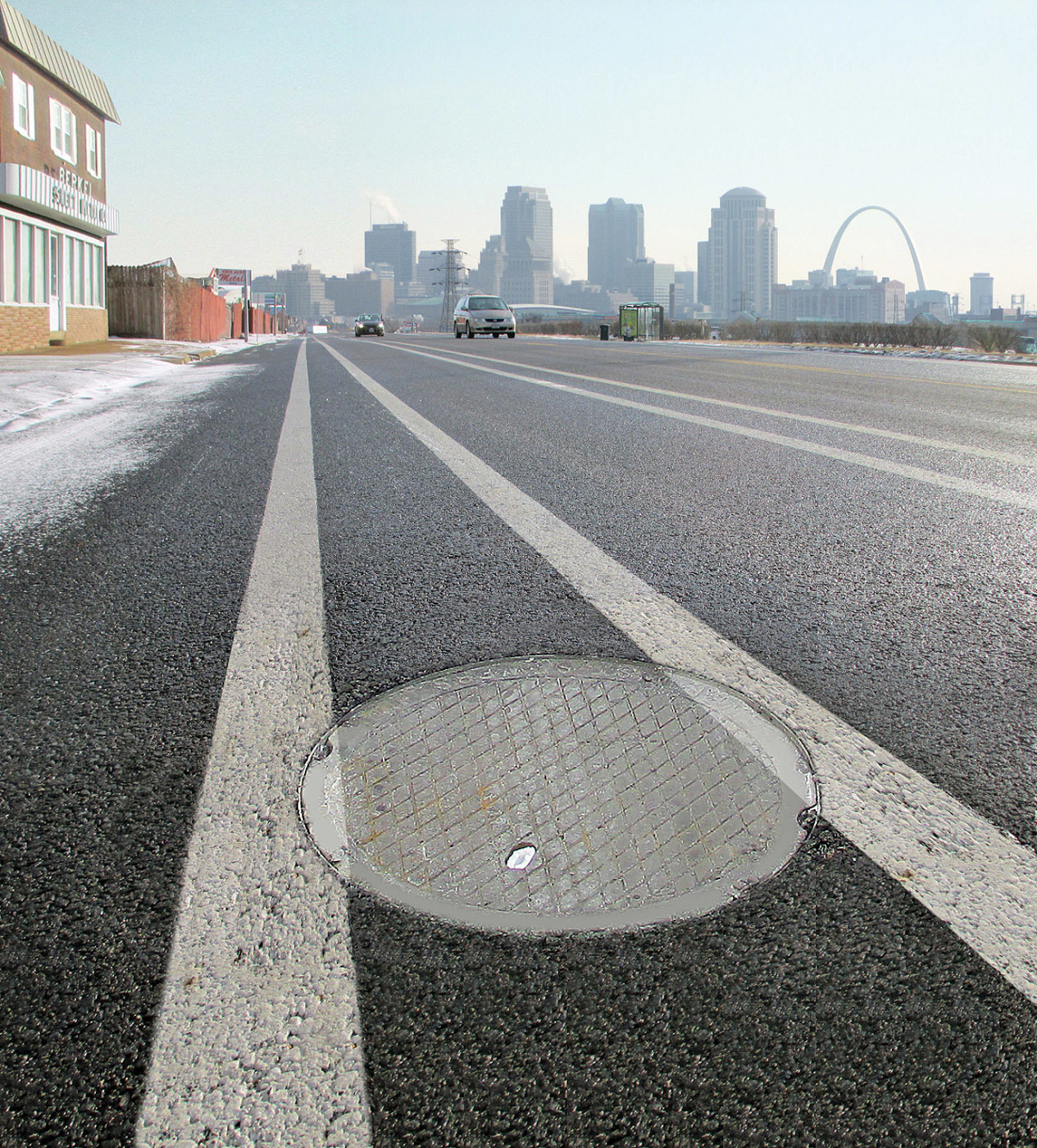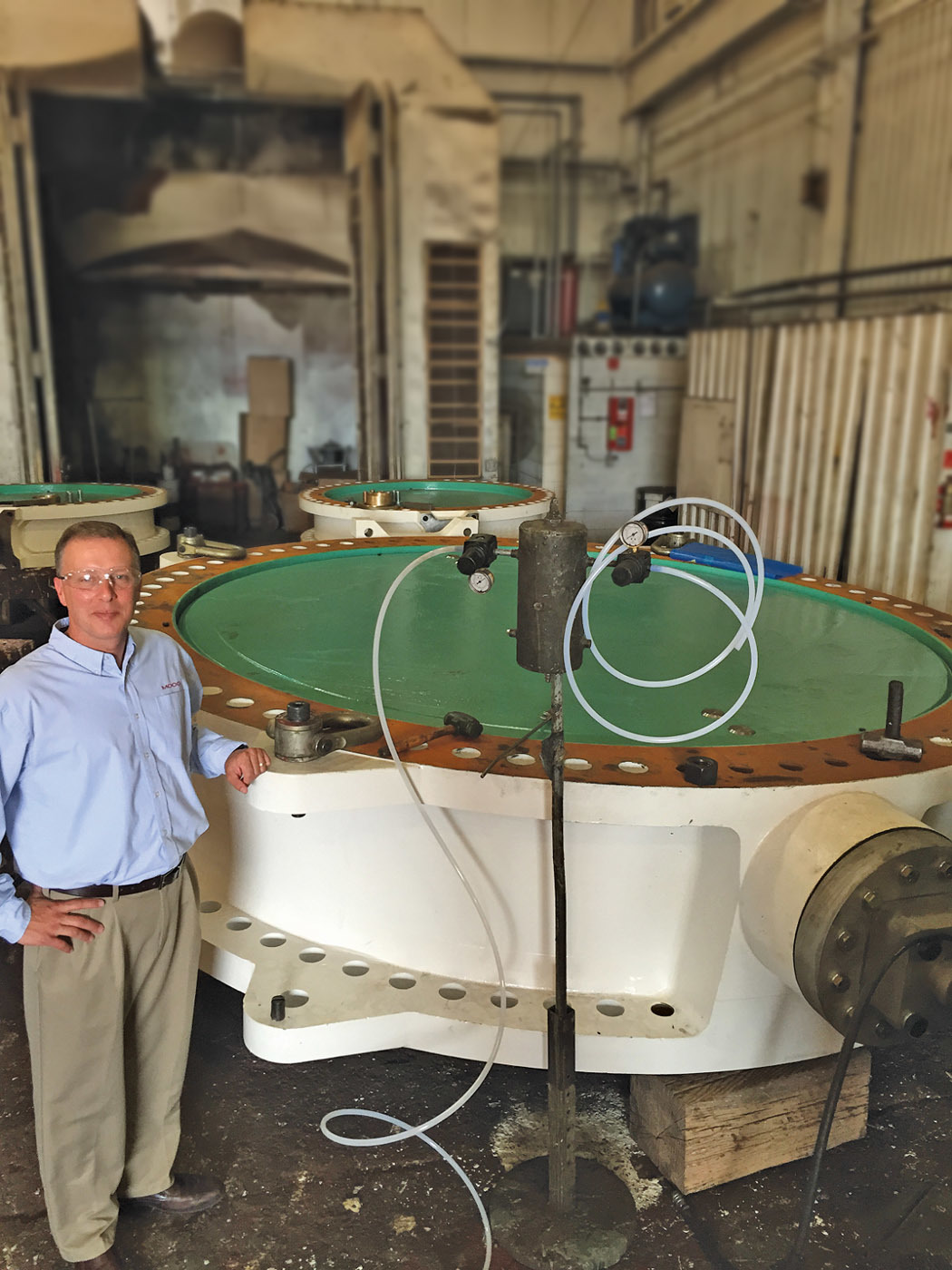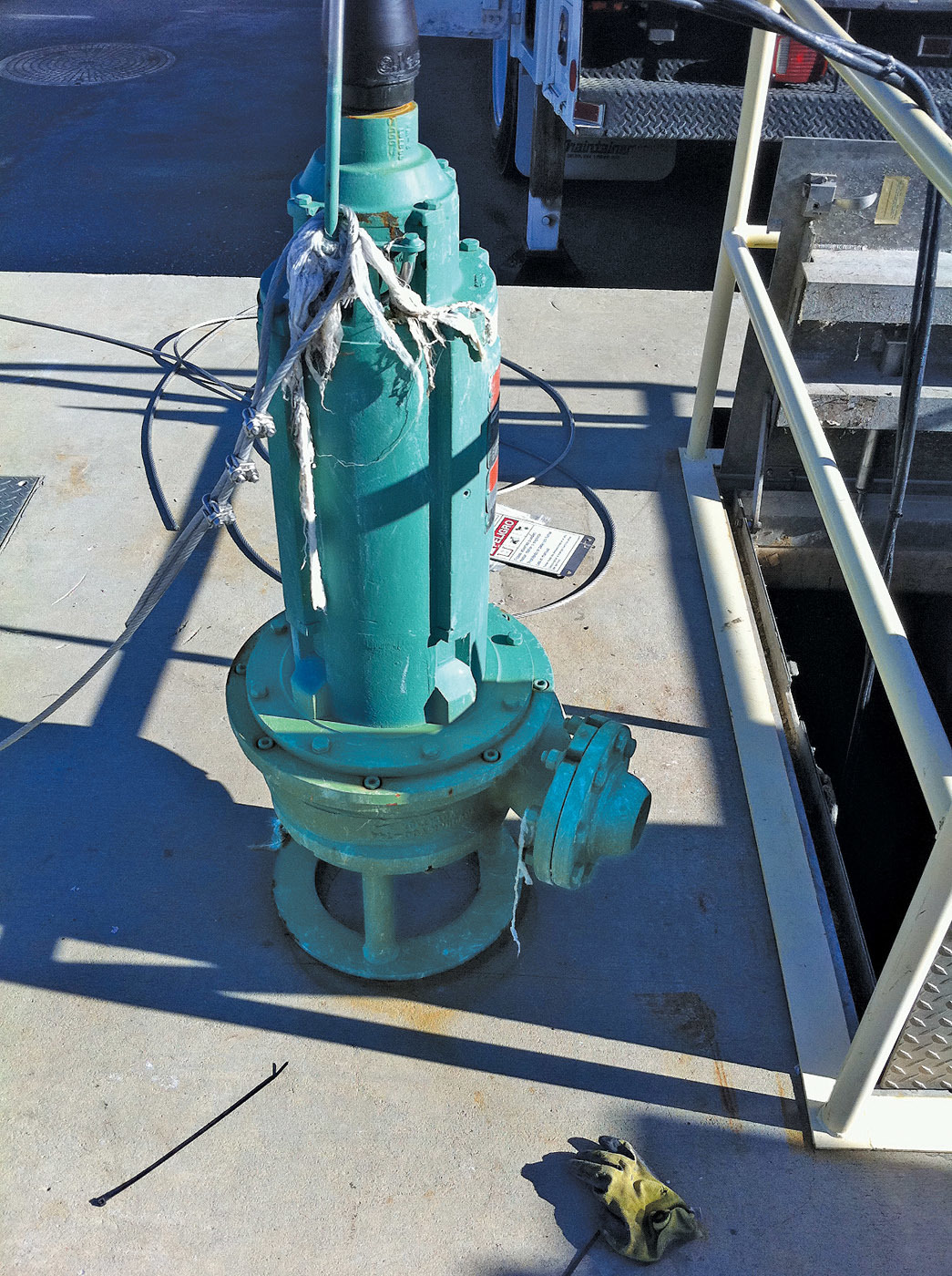Interested in Infrastructure?
Get Infrastructure articles, news and videos right in your inbox! Sign up now.
Infrastructure + Get AlertsManhole riser prevents infiltration and improves public safety
Problem:
The St. Louis Water department raised manholes to grade by manually exposing and lifting concrete grade rings, a process that takes several hours and compromises new paving lifts. After jackhammering and raising, the newly raised rims have to be sealed in with new concrete, creating seams in the new pavement that wear faster than undamaged concrete. It was clearly a problem, so it made sense to do a pilot test with an adjustable riser.
Solution:
The American Highway Products riser relies on a pivoted turnbuckle that can be expanded with a screwdriver. The screwdriver, used as a lever, exerts thousands of pounds of mechanical force, seating the riser in the original rim solidly and securely. “For the pilot test, we put a riser in an intersection on Kingshighway Boulevard, one of our busiest downtown roads,” says Vince Foggie, St. Louis Water department superintendent. “It was easy to install, stayed put and didn’t cause any problems, and it didn’t rattle. It was very encouraging, especially since we were getting behind on paving at the time.”
Results:
The at-grade risers were better for the roads in many ways. They didn’t set low, so water didn’t collect around the manhole lid, causing excessive infiltration. The city was able to save time and money, do more water department work and keep the public safer. 888-272-2397; www.ahp1.com.

Historical knowledge makes valve replacement easier
Problem:
During a comprehensive inspection of Los Angeles’ largest sewerage treatment facility, officials at the Hyperion Water Reclamation Plant discovered deterioration of its primary outfall pipeline, which wasn’t unusual given that it was over 60 years old. The inspection also revealed that 10-year-old isolation butterfly valves on the suction and discharge sides of the vertical turbine effluent pumps needed to be refurbished or replaced. When tide and plant hydraulic conditions allow, plant effluent flows with gravity through a 120-inch-diameter butterfly valve to the plant’s 5-mile outfall pipeline without the use of pumps. Failure of any of these valves could create a backflow event that would flood the plant.
Solution:
Fortunately, the city had documented that the five existing 60-inch butterfly valves and five 78-inch valves were Pratt-brand valves from Mueller Water Products, installed in the early 1970s. Knowing this information meant original project files, parts and replacement valves could be on hand before starting the work. This made the decision to refurbish or replace an easy one upon discovery of the extracted valves, saving valuable time. The critically important 120-inch butterfly valve needed to be replaced with a new actuation system. Moog Flo-Tork designed an actuator that required 13.9 gallons of hydraulic oil per stroke with a rated working oil pressure of 3,000 psi.
Result:
The new actuation system worked very well in tandem with the new butterfly valve. Since the installation, all 11 valves have operated flawlessly, giving plant managers and residents an upgraded level of safety and providing necessary protection of the Santa Monica Bay shoreline. 800-423-1323; www.muellerwaterproducts.com.

Chopper pump used to clear wet well of grease blanket
Problem:
The Otay River Pump Station, which pumps 7 to 9 mgd of raw sewage to the South Bay Water Reclamation Facility for water recovery in San Diego, had a problem in the 50-foot-long, 10-foot-wide, 30-foot-deep wet well. A floating blanket of grease and debris, sometimes as thick as 4 feet, would form regularly. The city was hiring two vacuum trucks to clean the station every three to four months at a cost of $50,000 to $100,000 per year.
Solution:
The city installed Vaughan chopper pumps, which are suitable for use in pump and lift stations as conditioning pumps when fitted with a nozzle to provide high-velocity mixing. They were placed in the problem wet well on a portable stand to recirculate and chop the contents. The company selected an 8-inch submersible chopper pump with a 25 hp, 1,200 rpm motor with mixing nozzle and portable stand.
Result:
In 18 months of use, the wet well has not required cleaning. The pump paid for itself in 2 1/2 months. 888-249-2467; www.chopperpumps.com.






